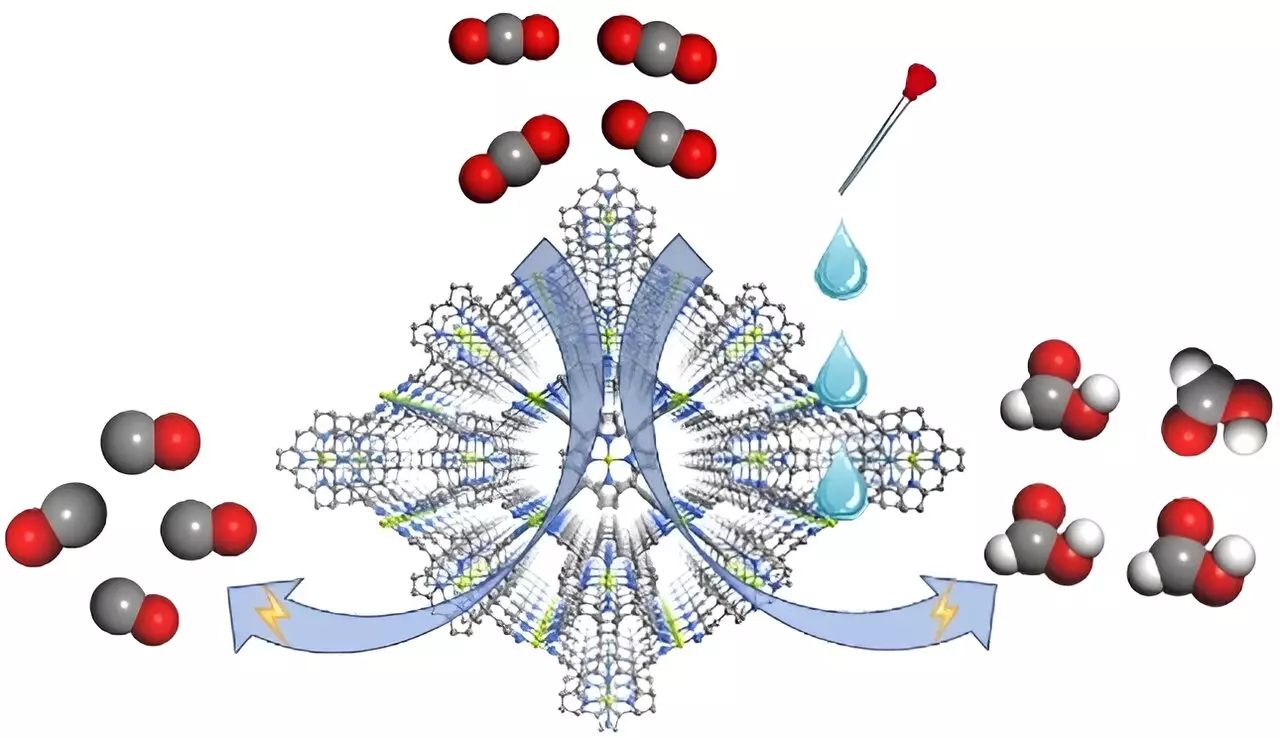The electrochemical conversion of carbon dioxide (CO2) represents a frontier in sustainable energy research, offering a potential pathway to mitigate the greenhouse effects caused by excess CO2 in the atmosphere. Traditional approaches have focused predominantly on the development and optimization of catalysts aimed at achieving selective CO2 reduction. However, recent insights shed light on an often-overlooked component of this process: the importance of electrolyte composition in determining product selectivity.
A groundbreaking study published in *Angewandte Chemie International Edition* has unveiled the versatile properties of a metal-organic framework (MOF) catalyst known as FICN-8. Developed by a research group led by Professors Cao Rong and Zhang Teng from the Fujian Institute of Research on the Structure of Matter, FICN-8 is composed of Cu(porphyrin)-based ligands and Cu(pyrazolate) building blocks. The MOF’s three-dimensional porous architecture allows for efficient substrate accessibility, facilitating significant electrochemical reactions.
The research highlights a critical relationship between the composition of electrolytes and the product selectivity during CO2 reduction. Through systematic tuning of solvent composition, the team discovered that FICN-8 demonstrated remarkable efficacy in catalyzing CO2 to carbon monoxide (CO) with a selectivity reaching up to 95% when paired with a specifically formulated tetrabutylammonium hexafluorophosphate (TBAPF6) in acetonitrile (MeCN). This finding underscores the significant role that electrolyte variables play in influencing the desired reaction pathways during the electrochemical reduction.
Shifting Product Selectivity
An intriguing aspect of the study is the observed transition in product output upon modifying the electrolyte to include protons, via the addition of water or trifluoroethanol (TFE). This alteration shifted the primary reduction product from CO to formic acid, showcasing that the reaction can be finely tuned under different conditions, with a peak Faradaic efficiency of 48% for formic acid achieved with specific concentrations of the additive. Such flexibility in product synthesis could have substantial implications for developing processes aimed at producing useful chemicals from CO2.
The researchers employed kinetic isotope effect (KIE) measurements to elucidate the underlying mechanisms that drive this selectivity switch between CO and formic acid. The KIE analysis yielded distinct results, indicating a substantial direct involvement of protons in formic acid production, demonstrating that the pathway diverges sharply from that of CO conversion, which operates independently of proton concentrations. Theoretical simulations further highlighted the critical nature of hydride adsorption on the porphyrin N site as a rate-determining step for formic acid formation.
This study illuminates the often underappreciated significance of electrolyte composition in the realm of electrochemical CO2 reduction, implying that advancements could arise from exploring new catalyst-electrolyte systems tailored for specific products. As researchers continue to investigate and optimize these variables, the potential for economically viable and environmentally friendly conversion of CO2 into value-added products becomes increasingly within reach. By broadening our focus beyond catalyst design to include electrolyte behavior, we may unlock a new dimension of efficiency and selectivity in CO2 utilization technologies.

